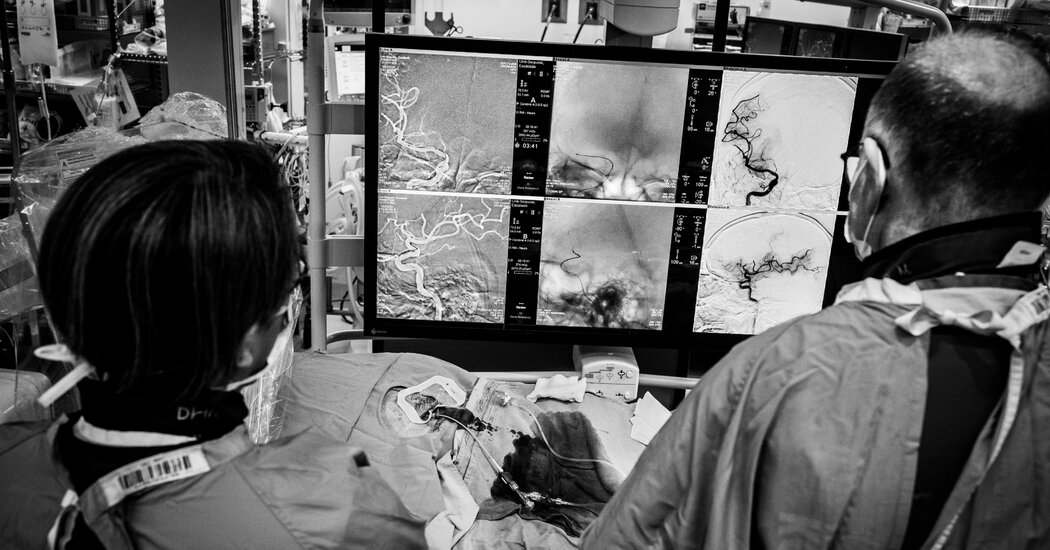
When ERA started, its goal was to make EVT accessible to every one of the 400 or more Albertans who are eligible for it each year. Last year, the province’s stroke teams completed 378 of the procedures.
About 5 to 15 percent of stroke patients turn out to be candidates for an endovascular thrombectomy. But the ones who do receive it tend to be among the most severe cases, and so, says Michael D. Hill, “there’s a visible difference to how stroke patients flow through the hospital now, because we’re able to send them home.” In a strange twist, some patients who might once have wound up on life support, or lingered in a hospital bed for weeks, now walk out under their own power within three or four days — while others who experienced smaller or more moderate strokes might sometimes stay longer.
One Sunday afternoon at Foothills, Hill was able to discharge a woman in her mid-50s who underwent her EVT on Thursday night. A huge swath of her brain had been at risk from the clot — but the thrombectomy saved almost all of it. “Look at you,” he said as she walked unassisted down the hallway of the stroke ward. “You’re pretty good.” Her stroke was caused by a heart condition called atrial fibrillation; a prescription for blood thinners would, they hoped, prevent any more clots from recurring. “Good thing you got her here quickly,” Hill told the woman’s daughter. “She’s done well. We’ll see you back in the clinic for follow-up.”
Elsewhere on the ward, the variety and cruelty of stroke’s effects was on display. One older woman, asked for her age, could only say wryly: “Too old.” Her sense of humor was intact, but her own biographical details now escaped her. Another patient, an elderly man, could no longer find the language to express his knowledge of the world. When Hill showed him a butter packet, and asked him if he knew what it was, the patient answered “yes,” confidently. But then he paused, struggling, unable to come up with the words. A man in his mid-40s was buoyant, eager to walk on his own, determined to get home and start physical therapy. But he couldn’t yet swallow consistently, and he remained on a liquid diet. So he had to stay.
Like patients experiencing heart attacks or major traumas, suspected acute stroke patients bypass the usual E.R. triage procedure. Instead, they’re brought straight to a trauma bay behind the main emergency room, and what comes next is a kind of frenetic choreography. I witnessed the whole dance one Friday night, when, after the page went out — STAT STROKE. ETA 5 MIN — the stroke team gathered behind the E.R. to await the patient, a woman in her early 40s.
After a brief stop in the trauma bay for a neurological exam, she was wheeled down the hallway, straight to diagnostic imaging, where two paramedics carefully hoisted her off the gurney and onto the bed of a CT scanner. The machine hummed, and Dr. Steven Peters, the on-call stroke neurologist for the night, peered over the shoulder of a resident at the black-and-white images filling the screen of a desktop computer.
Unfortunately, this patient hadn’t been discovered right away; her stroke had been ongoing for several hours. It was too late to consider tPA, but EVT was still worth a try: “It looks like she has a lot of cortex we can save,” Peters said, still staring at the screen. The neurointerventionalists were paged. Mayank Goyal was on call that night, along with a neuroradiology fellow.
